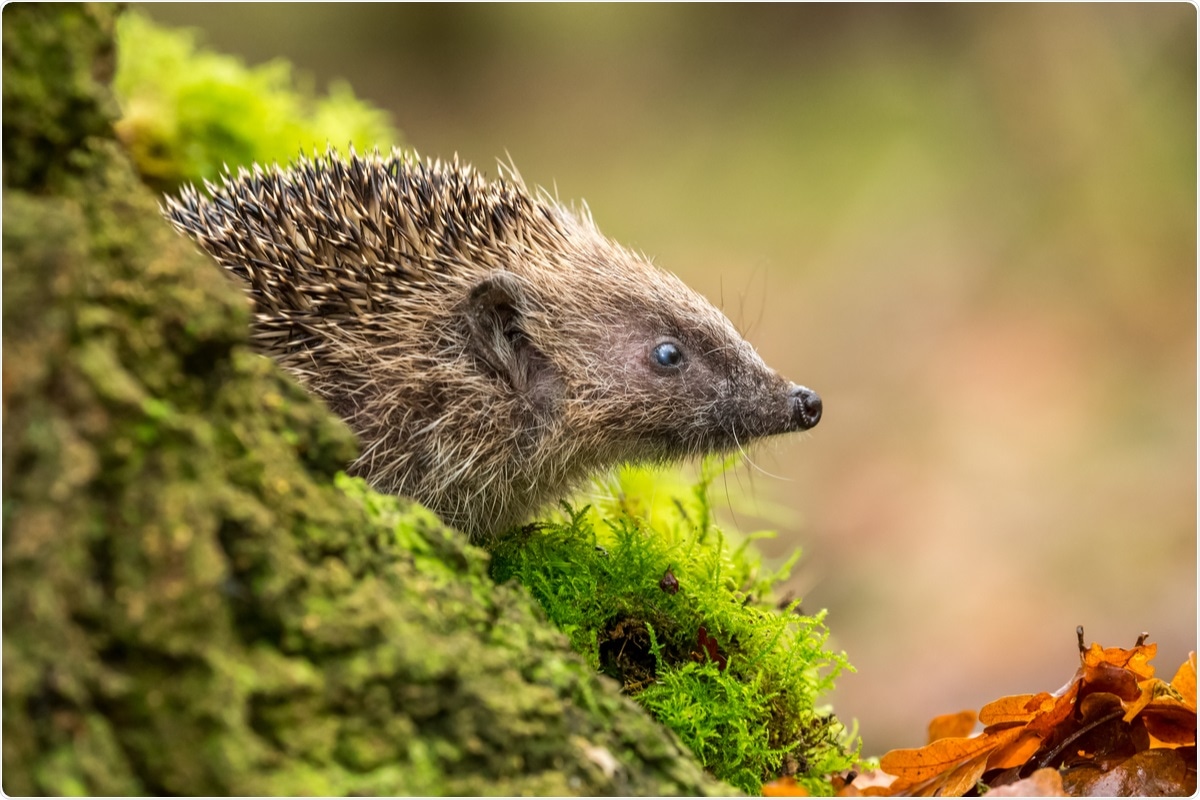Could the European hedgehog be a sentinel for infectious agents and a harbinger of environmental pollution?
A recent review paper by researchers in Portugal and Spain, published in the journal Biologics, revealed the current state of knowledge regarding hedgehog health – most notably the presence of infectious agents, diseases and other threats that can affect the health of the population.
A European hedgehog or western-European hedgehog (Erinaceus europaeus) is broadly distributed throughout continental Europe (including Russia). Its habitats are quite diverse and vary from natural spaces to rural and urban areas.

The growth of the human population, the global movement of people and food, the loss of wildlife habitat, as well as climate change issues have revealed the interconnectedness of human and animal health with the environment. The concept that underpins studies of this connection is becoming ever more important in recent years and is known as ‘One Health.’
In any case, wildlife disease surveillance represents a key tool for achieving One Health principles and halting the epidemic or pandemic spread of diseases among humans. The most salient examples are the Ebola virus epidemic and the coronavirus disease 2019 (COVID-19) pandemic, caused by the severe acute respiratory syndrome coronavirus 2 (SARS-CoV-2).
More specifically, most emerging infectious diseases are zoonotic in nature, which means they affect humans and at least one other vertebrate species. These zoonoses give rise to thousands of human deaths every year, as well as substantial economic losses.
An organism that bestows an advance warning of the potential risk to humans or other species – namely infectious agents or environmental changes – is known as the sentinel species. The biology of certain hedgehogs and ecological aspects implicate Erinaceus europaeus in many potentially emerging pathogens and/or infectious diseases.
A sentinel species for coronaviruses and SARS-CoV-2?
Hedgehogs can be viewed as “melting pots” for tickborne zoonoses, specifically Lyme borreliosis, which is recognized as one of the most common vector-borne zoonotic diseases. It has been shown that European hedgehog can have a significant impact on the epidemiology of some species of Borrelia that causes Lyme disease, primarily by affecting their distribution and quantity.
Furthermore, in Europe, they have been linked to salmonellosis (i.e., a common bacterial disease primarily affecting the gastrointestinal tract) and leptospirosis (i.e., a disease caused by spirochetes that manifest with kidney failure, severe liver damage and bleeding).
Recent studies on hedgehogs from France, Germany and Great Britain suggest that Erinaceus europaeus can constitute a wild reservoir of beta-coronaviruses as an intermediate host, perpetuating viral spread. Although its geographical distribution and eating habits make this species an improbable candidate for this role in the case of SARS-CoV-2, this possibility has to be taken into account.
‘Biomonitors’ of environmental pollution
Biomonitoring of animal species can help quantify the amount of hazardous substances after exposure. This is done to evaluate how much of it has been absorbed, but also to predict and assess the consequent organic lesions and to eventually tailor mitigation strategies.
It is known that hedgehogs tend to have higher levels of lead in comparison to omnivores or herbivores as a result of earthworm and insect consumption. Consequently, this results in a potential venue of perpetuating lead in well-defined food chains.
In more natural and uncontaminated areas, the amount of heavy metals and metalloids that are found in hedgehog organs is usually lower and substantially related to the individual age, which is, in turn, is directly linked with the exposure time.
Antibiotic resistance and overall implications
Finally, small mammals may act as sentinels, reservoirs and/or potential vectors of either resistance genes or antibiotic-resistant bacteria in the environment, with potential transmission to other hosts – including humans. When hedgehogs are concerned, this is especially pertinent for tetracycline-resistance genes.
Methicillin-resistant Staphylococcus aureus (MRSA) is one of the significant problems in infection control and antimicrobial treatment worldwide. One study from Sweden clearly showed how two hedgehogs with severe infections caused by MRSA could be reservoirs for different precursors of resistant genes.
Likewise, one of the tested Erinaceus europaeus was positive for specific Salmonella species that harbored resistance to a plethora of different antibiotics, such as ampicillin, tetracycline, streptomycin and trimethoprim/sulfamethoxazole.
In conclusion, prevention or at least early control of various disease outbreaks and environmental changes are crucial in reducing their impact, necessitating transdisciplinary research approaches. The role of mammals such as the European hedgehog within a One Health context should definitely be addressed with further research.
- Baptista, C.V.J. et al. (2021). Can the European Hedgehog (Erinaceus europaeus) Be a Sentinel for One Health Concerns? Biologics. https://doi.org/10.3390/biologics1010004, https://www.mdpi.com/2673-8449/1/1/4.
Posted in: Medical Science News | Medical Research News | Disease/Infection News | Healthcare News
Tags: Ampicillin, Antibiotic, Antibiotic Resistance, Bacteria, Biomonitoring, Bleeding, Borrelia, Climate Change, Coronavirus, Coronavirus Disease COVID-19, Epidemiology, Gastrointestinal Tract, Genes, Infection Control, Infectious Diseases, Kidney, Kidney Failure, Leptospirosis, Liver, Lyme Disease, Pandemic, Pollution, Research, Respiratory, Salmonella, Salmonellosis, SARS, SARS-CoV-2, Severe Acute Respiratory, Severe Acute Respiratory Syndrome, Staphylococcus aureus, Syndrome, Tetracycline, Virus, Zoonosis

Written by
Dr. Tomislav Meštrović
Dr. Tomislav Meštrović is a medical doctor (MD) with a Ph.D. in biomedical and health sciences, specialist in the field of clinical microbiology, and an Assistant Professor at Croatia's youngest university – University North. In addition to his interest in clinical, research and lecturing activities, his immense passion for medical writing and scientific communication goes back to his student days. He enjoys contributing back to the community. In his spare time, Tomislav is a movie buff and an avid traveler.
Source: Read Full Article



